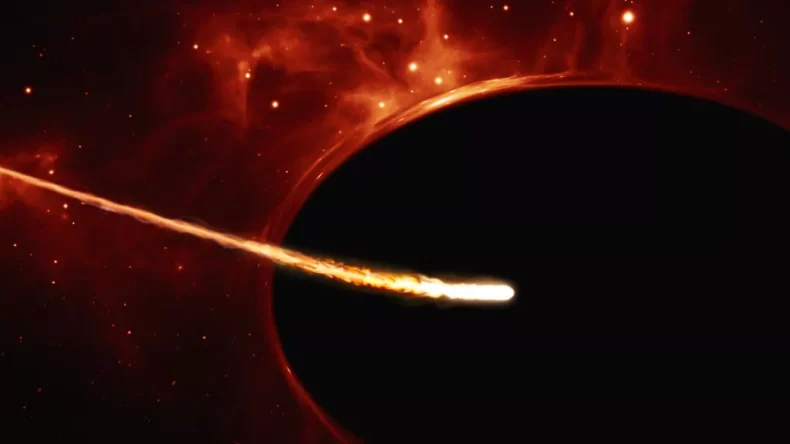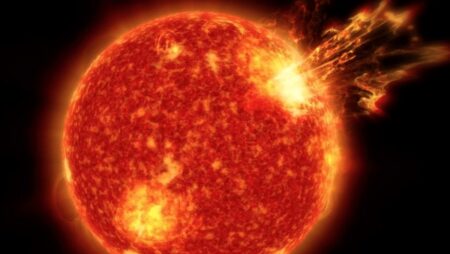Astrophysicists have identified the fastest known star, which is speeding around the Milky Way’s central black hole. In around four years, the star labeled S4716 completes an orbit around the supermassive black hole Sagittarius A* (Sgr A*).
This indicates that the star is moving at rates of around 18 million miles per hour (29 million kilometers per hour) or over 5,000 miles per second. During this speedy orbit of Sagittarius A*, which has an estimated diameter of 14.6 million miles (23.5 million kilometers). The Star, S4716 approaches the supermassive black hole to within 9.2 billion miles (15 billion km).
This may seem to be a vast distance, but it is really just 100 times the distance between Earth and the sun. It is a comparatively little amount in cosmic terms. Each light-year is equal to 5.9 trillion miles (9.5 trillion km).
S4716 is part of the compact, densely packed S cluster of stars that orbits near the galactic center and the supermassive black hole at the core of the Milky Way. These S cluster stars all move very quickly, yet their luminosity and masses differ.
The finding of a star so near to Sgr* might alter our view of the evolution of our galaxy. It alters, in particular, its rapidly moving center stars.
Astrophysicist Michael Zajaek of Masaryk University in Brno stated in a statement, “S4716’s short-period, tight orbit is rather intriguing.” “Near the black hole, stars cannot develop as readily. S4716 had to migrate inwards, such as by contacting other stars and objects in the S cluster.” “It causes its orbit to dramatically contract.”
The most renowned star in the S-cluster is likely S2, which has a 16-year orbital period around Sgr A*. It never approaches closer than 11 billion miles to the supermassive black hole (18 million km). S2 has proven extraordinarily valuable for the research of Sgr A*, yet it is not always useful.

“S2 operates as if a giant individual were sitting in front of you in a movie theatre; it obstructs your vision of what is essential. As a result, S2 often obscures the view into the center of our galaxy,” according to Florian Peissker. Florian Peissker is an astronomer at the University of Cologne and co-author of the new research. However, we can view the environs of the central black hole for limited periods of time.
Peissker and his colleagues were ultimately able to validate the quick orbital period of S4716 by continually developing analytical methods. It was done over two decades and combining them with 20 years of observations.
Five telescopes observed S4716, giving extensive data on the star: the Hawaii-based Keck observatory instruments NIR2 and OSIRIS. It includes also the Very Large Telescope instruments SINFONI, NACO, and GRAVITY.
Peissker remarked, “For a star to be in a stable orbit so near and quickly to a supermassive black hole was utterly unexpected and represents the limit of what can be viewed with conventional telescopes.”
The study was published in The Astrophysical Journal on Tuesday, July 5th.













